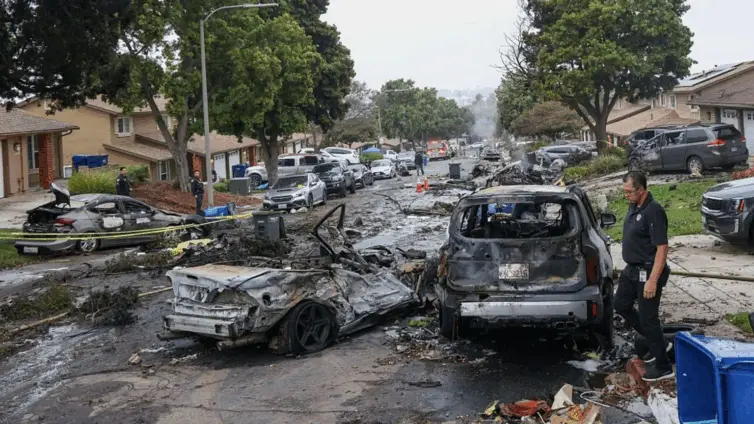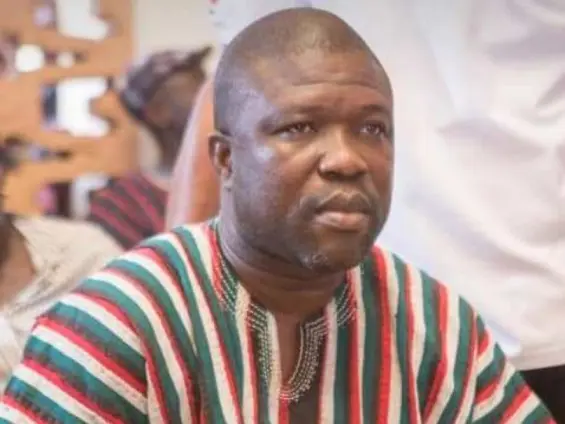The images are stark: entire neighborhoods submerged, families wading through chest-high water, and the heartbreaking sight of belongings floating away. Recent floods in Ghana have left a trail of devastation, displacing thousands and causing millions of cedis in damage. The May 18th floods, in particular, served as a brutal reminder of the country’s vulnerability to these increasingly frequent and intense weather events.
Ghana’s struggle with perennial flooding is intensifying, driven by a combination of climate change, rapid urbanization, and inadequate infrastructure. But amidst the despair, there’s hope. Frank Aboagye Danyansah, CEO of Danywise Estate and Construction, a seasoned expert in construction and urban planning, has proposed a comprehensive 12-point plan to mitigate flood damage and build a more resilient future for Ghana. Danyansah, who has contributed to key national policies, advocates for an integrated approach combining modern engineering solutions with sustainable urban design principles. His plan encompasses smart rainwater management, the construction of detention basins, the use of permeable materials, and a host of other innovative strategies.
This article delves into Danyansah’s 12-point plan, exploring each element in detail and examining the challenges and opportunities that lie ahead in the quest for effective flood control Ghana.
Ghana’s annual floods aren’t just a natural disaster; they’re a recurring nightmare rooted in a complex interplay of geographical vulnerabilities and infrastructural deficits. The low-lying topography of many areas, coupled with inadequate drainage systems and the alarming trend of building on floodplains, creates a perfect storm for disaster. Cities like Accra and Kumasi bear the brunt of these floods, witnessing widespread destruction and displacement each year.
The May 18th floods served as a harsh reminder of the country’s vulnerability. “It was a devastating sight,” recalled Mr. Danyansah, witnessing the aftermath. The statistics paint a grim picture: thousands displaced, critical infrastructure crippled, and lives tragically lost. The economic impact is equally staggering, with businesses shuttered, agricultural lands inundated, and vital infrastructure severely damaged. The social costs are no less profound, with displacement leading to health risks and the disruption of education, creating a cycle of vulnerability and hardship.
Frank Aboagye Danyansah, CEO of Danywise Estate and Construction, brings decades of experience in construction and urban planning to the table. His 12-point plan offers an integrated approach to flood control in Ghana, addressing both the immediate causes and the underlying vulnerabilities that contribute to the crisis.
Smart Rainwater Management (NADMO Expansion): Danyansah proposes a decentralized approach to disaster management, expanding the role of NADMO (National Disaster Management Organisation) at the local level. By empowering local branches with resources and training, NADMO can respond more effectively to emergencies and coordinate relief efforts. Furthermore, smart rainwater management involves capturing and filtering rainwater for use as a clean water source, reducing runoff and alleviating pressure on drainage systems.
Detention Basins: Holding Back the Flood: Detention basins are strategically located reservoirs designed to temporarily store excess rainwater, reducing peak flows and preventing flash floods. These basins act as a buffer, slowing down the flow of water into drainage systems and rivers, giving them time to cope with the increased volume.
Building Flood Control Infrastructure: Levees, Dikes, and More: Danyansah emphasizes the importance of investing in robust flood control infrastructure, including levees, dikes, overflow systems, and adjustable dams. “Creating flood control systems: levees, dikes, overflow systems, adjustable dams and shore up river banks,” he asserts, is crucial for protecting vulnerable communities and infrastructure. Strategic placement and regular maintenance are essential to ensure the effectiveness of these structures.
Permeable Materials: Letting the Water Soak In: Traditional concrete and asphalt surfaces exacerbate flooding by preventing water from seeping into the ground. Permeable materials, such as permeable concrete and paving stones, allow rainwater to infiltrate the soil, reducing runoff and replenishing groundwater reserves. These materials can be used in sidewalks, parking lots, and driveways to create more sustainable and flood-resilient urban environments.
Keeping the Sewer System Clean: Preventing Blockages: A well-maintained sewer system is essential for effective stormwater management. Regular cleaning and maintenance prevent blockages and overflows, ensuring that rainwater can flow freely through the system. Public education campaigns are also crucial to discourage improper waste disposal, which can clog drains and exacerbate flooding.
Water Infiltration and Attenuation Systems: Natural Absorption: These systems mimic natural processes to absorb rainwater into the ground. Rain gardens and bioswales, for example, are planted with native vegetation that helps to filter and absorb rainwater, reducing runoff and improving water quality.
Individual Floodproofing Measures: Protecting Homes: Danyansah urges individuals to take proactive measures to protect their homes from flooding. “Individuals should stop tiling or concreting all the compounds of their houses; it’s a great factor in flooding,” he advises. Using water-permeable materials in landscaping and avoiding complete paving of compounds can significantly reduce flood risk.
Sponge Cities: Embracing Water Absorption: The concept of sponge cities involves designing urban areas to absorb and retain rainwater, mimicking the natural function of a sponge. This approach combines green infrastructure, permeable pavements, and water storage facilities to mitigate flood risk and create more sustainable and eco-friendly urban environments.
Permeable Pavement: A Key Infrastructure Component: Danyansah advocates for the widespread adoption of permeable pavement by both government and the private sector. This infrastructure component is highly effective in reducing runoff, improving water quality, and creating more sustainable urban environments. This would be a key component of flood control in Ghana.
Improved Drainage System: The Backbone of Flood Control: Investing in upgrading and maintaining drainage systems is essential for effective flood control in Ghana. Addressing inadequate infrastructure and improving stormwater management practices are critical for mitigating flood risk. “Addressing inadequate drainage systems requires investment in infrastructure upgrades and maintenance, as well as improved stormwater management practices,” emphasizes Danyansah.
Improved Flood Warning Mechanisms: Early Alerts Save Lives: Timely flood warnings are crucial for protecting lives and property. The Ghana Meteorological Agency and the Ghana Hydrological Authority play a vital role in providing these warnings, and Danyansah advocates for enhanced monitoring and communication systems to ensure that communities receive timely alerts.
Rainwater Harvesting: Turning a Problem into a Resource: Rainwater harvesting involves capturing and reusing rainwater for irrigation, cleaning, and other purposes. This reduces flood risk and conserves water resources. Rainwater can even be recycled for drinking water after proper filtration and treatment.
Implementing Danyansah’s 12-point plan is not without its challenges. Funding constraints, lack of coordination between government agencies, and political will can all pose obstacles. However, the potential benefits of a more flood-resilient Ghana are immense. Collaboration between government, the private sector, and communities is essential for success. By working together, Ghana can overcome these challenges and build a more sustainable and resilient future.
Frank Danyansah’s 12-point plan offers a comprehensive roadmap for mitigating flood damage and building a more resilient Ghana. By embracing smart rainwater management, investing in flood control infrastructure, and promoting sustainable urban design, Ghana can significantly reduce its vulnerability to flooding and create a safer and more prosperous future for its citizens. “When these are done simultaneously and continuously, we will have a safe and flood-free country, Ghana,” concludes Danyansah. To learn more about Danyansah’s proposals, see this MyJoyOnline article.
Image Source: MYJOYONLINE





















